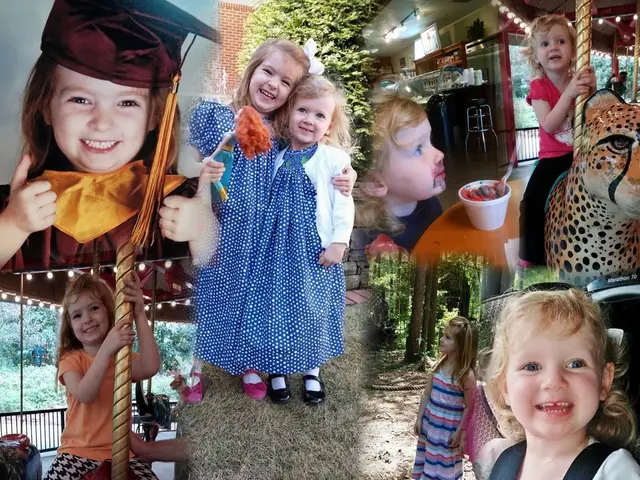Safeguarding the Visual Likeness of Notable Personnel and Artists in the Era of Artificial Intelligence
In the rapidly evolving world of artificial intelligence, the ability to generate hyper-realistic images, videos, and other content has raised pressing concerns regarding ownership, authenticity, and the protection of individual identity – particularly for public figures and artists. As AI continues to disrupt the creative industry, ensuring the fair and ethical use of AI-generated content is crucial to safeguarding these creative entities' rights.
Traditional notions of ownership and authenticity are being challenged as AI technology progresses. The unauthorized use of a public figure's or artist's likeness—often through deepfakes—presents a significant risk, potentially leading to financial loss and damage to personal branding. In the near future, the demand for AI-generated images, art, and avatars is expected to grow, highlighting the need for safeguards against exploitation.
To maintain control over their likenesses, artists and public figures must consider licensing agreements. Such agreements ensure fair compensation for the commercial use of their image, voice, or video and provide a framework for maintaining control over their personal brand. As AI technology continues to advance, the importance of licensing arrangements becomes increasingly vital.
By licensing their likenesses across multiple media formats—such as voice, images, and video—creators can guarantee that they approve or deny specific uses and maximize their financial opportunities while maintaining control over their personal brand. In doing so, they protect their identities and counter potential risks associated with AI-generated content.
Licensing offers numerous advantages for artists and public figures. Most importantly, licensing provides control and integrity, allowing creators to ensure their likenesses are used appropriately to avoid damaging their brands. Licensing also guarantees fair compensation, ensuring that the rightful owners benefit from their likenesses, and presents opportunities for collaboration with AI technology for income generation.
Many artists have recognized the potential of AI and are embracing its role in the creative industry. For instance, Grimes has partnered with TuneCore to launch GrimesAI, an innovative platform that allows creators to utilize her voice in AI-generated music while ensuring she receives 50% of the royalties from these creations. Other notables, like James Earl Jones and Bruce Willis, have licensed their voices and likenesses for future projects, ensuring the continuity of their legacies and capitalizing on opportunities presented by AI technology.
Addressing these challenges requires ethical AI initiatives and strong regulations. Some companies are already leading the way in safeguarding artists' likenesses. YouTube's DreamTrack, in collaboration with Google's AI research division, allows artists to generate unique soundtracks for their YouTube Shorts utilizing the voices of popular artists. This initiative ensures that artists' likenesses are used with approval and compensated fairly. Other ethical AI players, like ElevenLabs and FameFlow, prioritize the safe use of AI for generating audio and visual content while respecting artists' rights.
To distinguish AI-generated content from authentic work, digital watermarking technologies can be employed. These tools embed imperceptible codes or identifiers within content, acting as a "digital fingerprint" for creators, platforms, and consumers. This helps verify the origin and monitor usage, providing transparency while preventing unauthorized reproductions. Watermarking applications are not limited to one type of content, being applicable to images, videos, and music across various media platforms.
The landscape of laws addressing content creation, including AI-generated media, faces considerable evolution. Existing regulations face hurdles in keeping pace with AI-generated likenesses, leaving artists and public figures vulnerable. In the United States, The Copyright Act, Federal Trade Commission Act, and "Right of Publicity" laws do not specifically address AI-generated content, creating inconsistencies in enforcement across jurisdictions. In the European Union, the EU Artificial Intelligence Act aims to ban certain harmful AI practices and promote ethical use principles, yet it focuses primarily on sectors such as healthcare and finance.
Recognizing the need for stricter regulations, new legislation is being introduced to better protect artists and public figures. Notable examples include The TAKE IT DOWN Act in the United States, which criminalizes the publication of nonconsensual AI-generated intimate images, and the EU's AI Act, which prohibits certain uses of AI that conflict with EU values.
As the world grapples with the challenges posed by AI-generated likenesses, the future of protecting creativity in the AI era lies in a balance between technological advancements and regulation. While tools like watermarking and labeling AI-generated content are already in place, clear regulations are necessary to enforce accountability and establish penalties for misuse. The collaboration between organizations, governments, and creators is essential to create transparent and secure environments that properly value the creative contributions of public figures and artists.
In light of the growing AI-generated content in entertainment, the utilization of digital watermarking technologies becomes crucial for ensuring the origin and authenticity of such content. This transparency helps protect individual identities and aids in enforcing accountability for unauthorized use.
To foster ethical AI initiatives and uphold creative entities' rights, strong regulations are essential. Governments and organizations must collaborate to introduce clear laws that establish penalties for misuse, promoting a secure and transparent environment that truly values creative contributions.








